I’ve become obsessed with finding unique plants, shrubs, and trees. One tree that caught my attention was a tree with purple leaves.
The rich purple contrasts so nicely against the normal green foliage of the other trees, so I made it a mission to find out what trees have natural purple leaves.
I love a colorful garden, and purple tree leaves are just the thing that’s missing from my colorful landscape.
Here are the trees that have purple leaves that you can plant in your garden for a splash of purple:
Table of Contents
Trees with Purple Leaves
The most popular purple trees are the Japanese maple, purple-leaf plum, redbud forest pansy, crabapples, purple-leaf European beech, black elderberry, purple-leaf sand cherry, crimson king maple, purple-leaf acacia, purple smoke tree, and copper beach.
11 Trees With Purple Leaves
Since some shrubs are like mini trees, I’ve included these in my list of purple-leaved trees.
Some trees with reddish leaves also appear purple, so I’ve considered them in my list too.
Tree #1: Japanese Maples
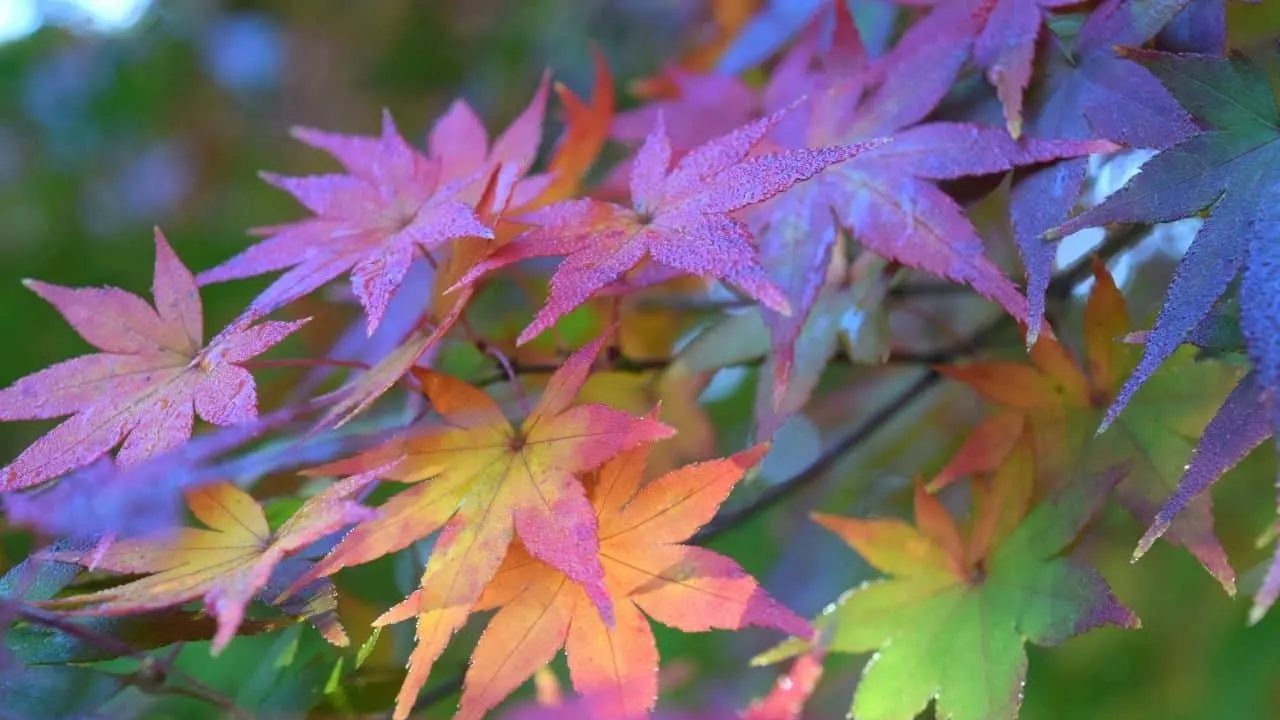
There are quite a number of Japanese maple trees that grow purple leaves. Some of these are:
- Tamukeyama
- Sherwood flame
- Atropurpureum
- Ever red
- Garnet
- Burgundy lace
Best for USDA plant hardiness zones 4-8, Japanese maples grow a height of 15-25 feet. However, there are some dwarf tree varieties too.
Ensure your Japanese maple is planted in well-draining soil and gets enough full and partial sun to thrive.
Tree #2: Purple-Leaf Plum
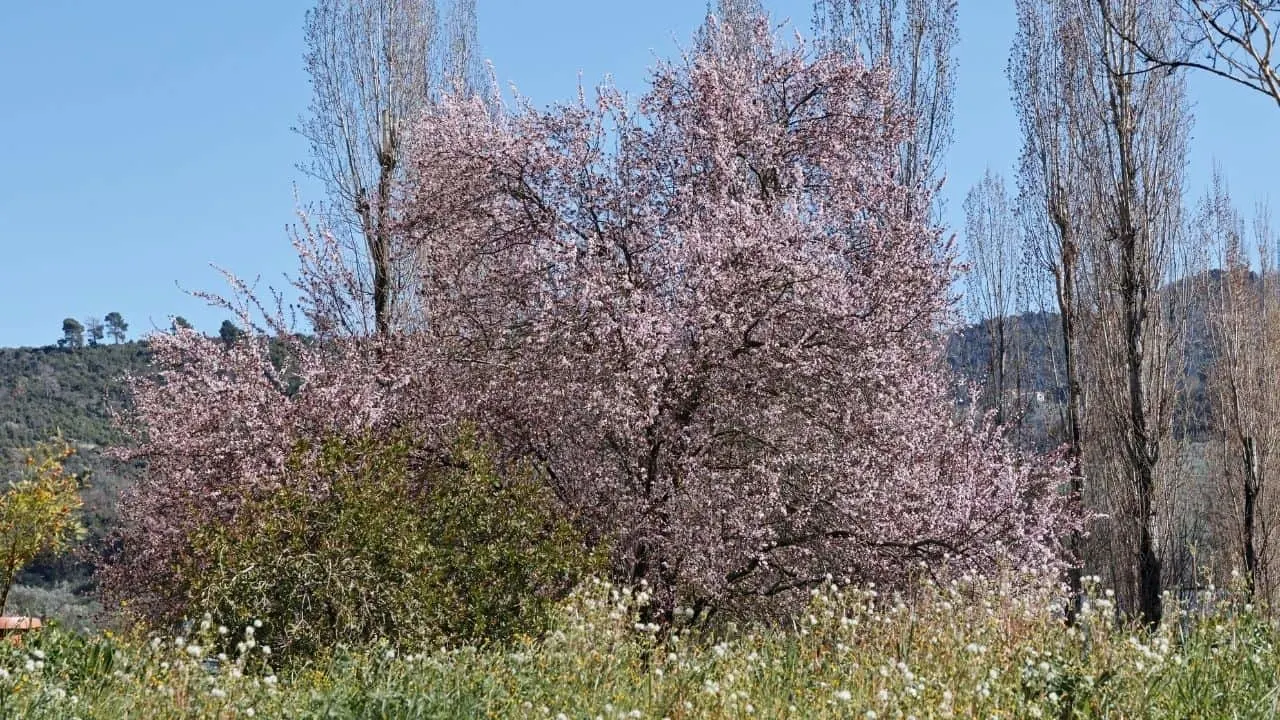
If you want a tree that produces edible fruit and has pretty purple leaves, then the purple-leaf plum tree is a winner.
As a small tree with a round shape, purple-leaf plums grow 15-25 feet tall. These trees are suitable for USDA hardiness zones 5-9.
I particularly love the light pink flowers that bloom in spring.
Varieties of purple-leaf plum you could plant in your yard are:
- Thundercloud
- Vesuvius
- Newport
- Mt St Helens
- Pissardii
- Pendula
Tree #3: Redbud Forest Pansy
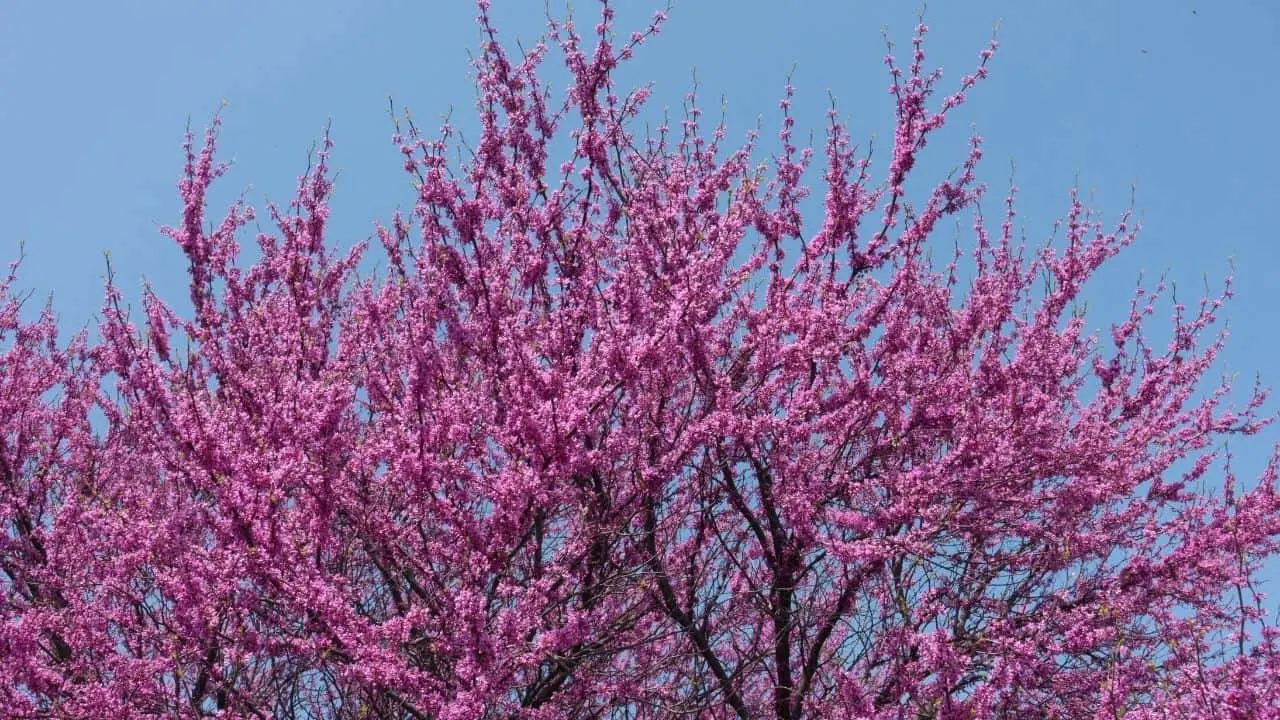
I love the redbud forest pansy tree scrub because it grows purple heart-shaped leaves. The rosy-pink flowers that are pea-like fit in well with the purpleness of the leaves.
These shrubs grow 20-30 feet tall, and they like full sun and partial shade. Plant these in USDA hardiness zones 5-9 for the best results.
Tree #4: Crabapples
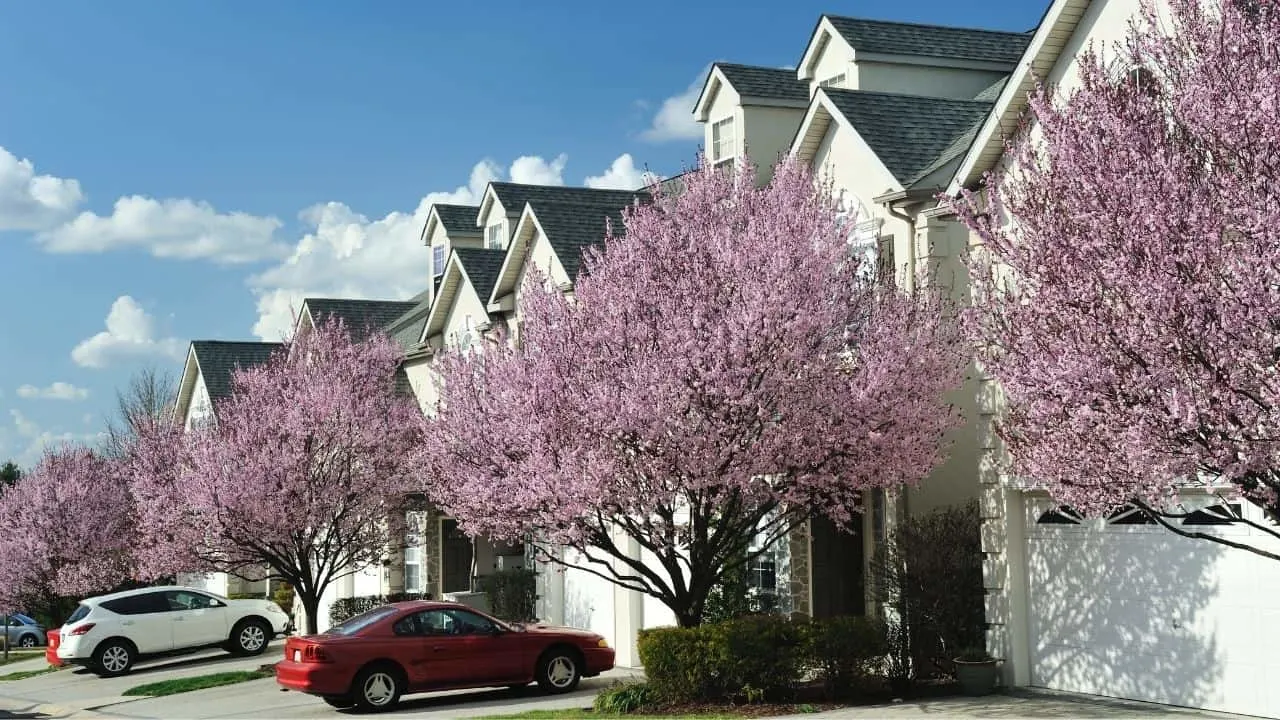
Crabapple trees grow to a height of 11-25 feet. Not all crabapples have purple leaves, so choose these varieties:
- Royalty
- Thunderchild
- Profusion
- Radiance
- Purple prince
- Red baron
These trees grow best in USDA growing zones 3-9.
Well-draining soil and exposing them to a location with full or partial sunlight are recommended for crabapples.
Tree #5: Purple-Leaf European Beech
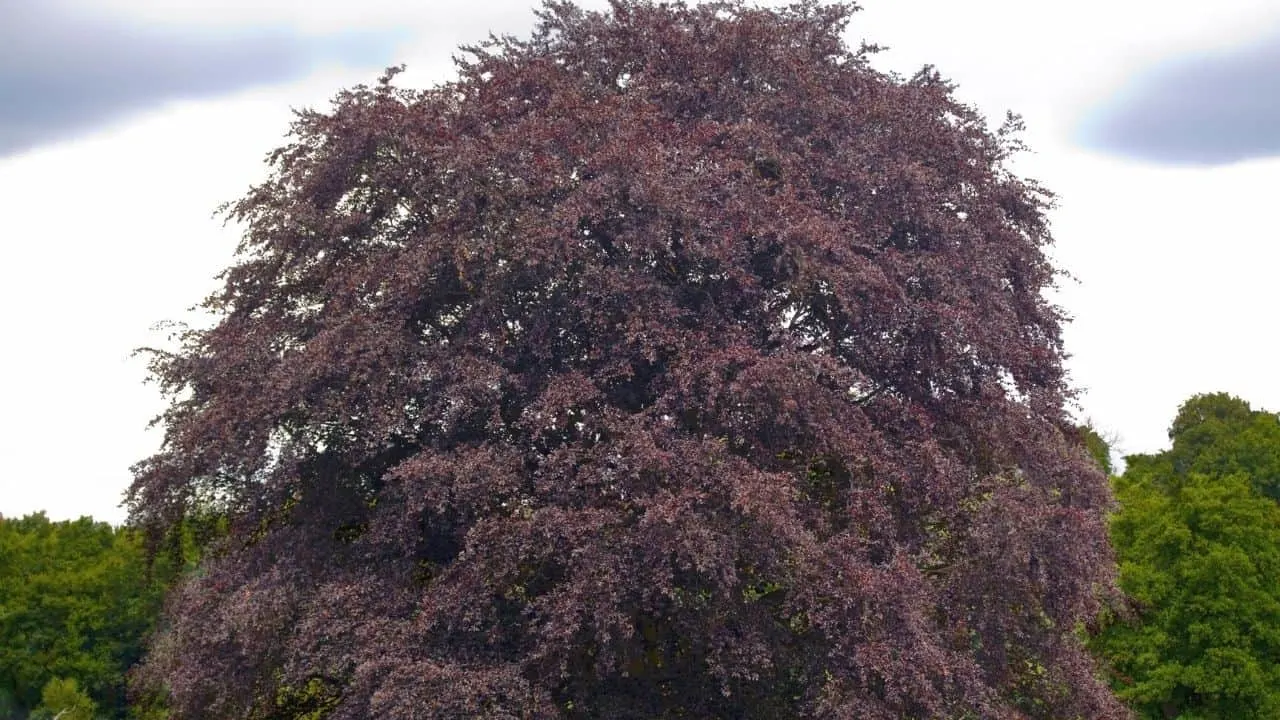
The purple-leaf European beech thrives in USDA zones 4-7. It needs full sun and regular watering. This tree’s adaptable to various soil types.
The tree grows quite tall at 40-50 feet. This tree has deep purple foliage all throughout summer.
Tree #6: Elderberries
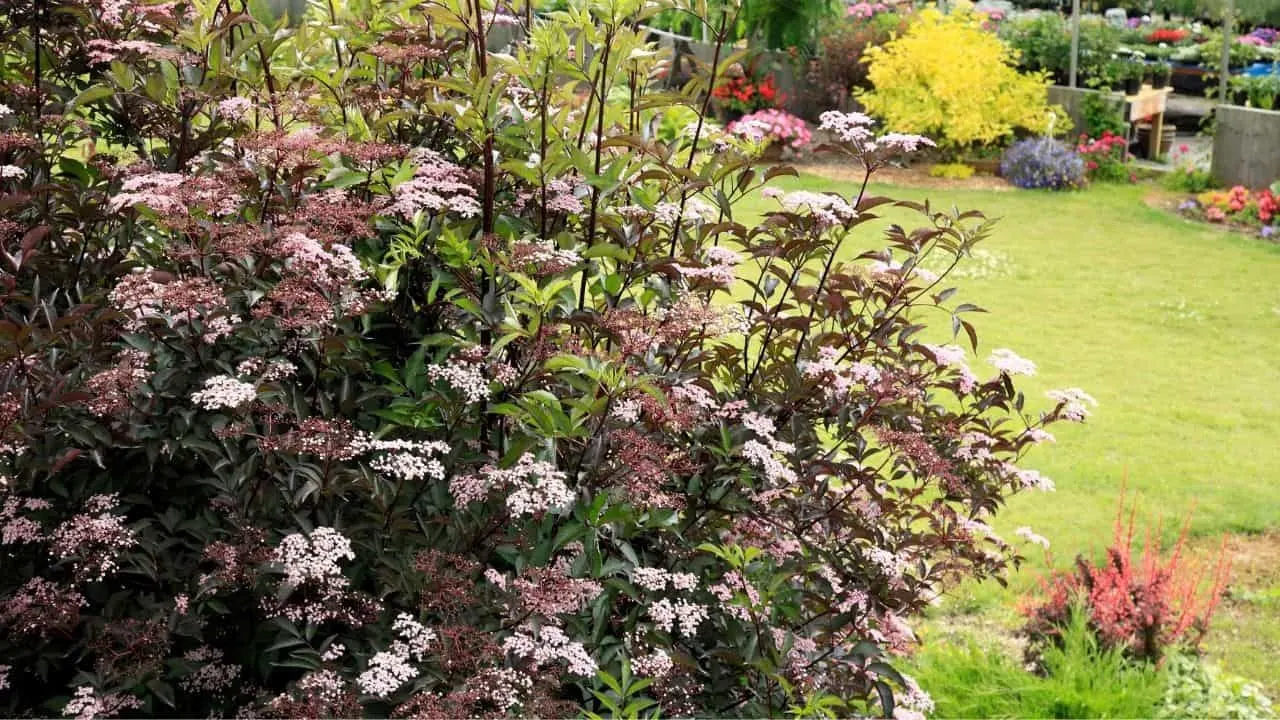
Elderberry shrubs bear fruits and flowers that are popular. These can be used in a variety of applications, from making jams, jellies, and syrups to being used in pies, cordials, and more.
At 6-12 feet tall, these shrubs are ideal if you live in USDA zones 3-8. With well-draining soil and full to partial light, choose these purple-leaved varieties:
- Black lace
- Black beauty
- Purpurea
- Thundercloud
Tree #7: Purple-Leaf Sand Cherry
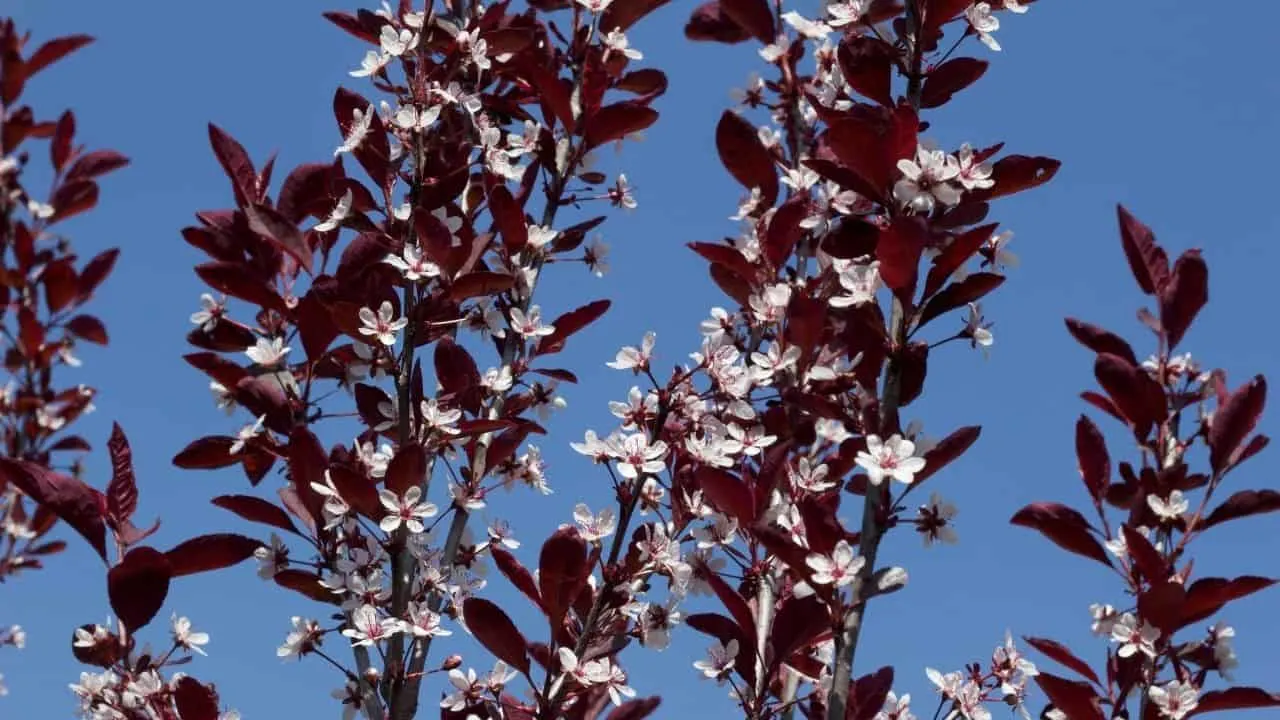
A short tree or shrub, the purple-leaf sand cherry’s fruits are ideal for wildlife to feast on. The leaves are purple-red.
A hardy shrub, you can plant the purple-leaf sand cherry tree in USDA hardiness zones 2-8. As a roundish tree, it grows 7-10 feet tall and needs well-draining soil and full to partial sun to thrive.
Tree #8: Crimson King Maple
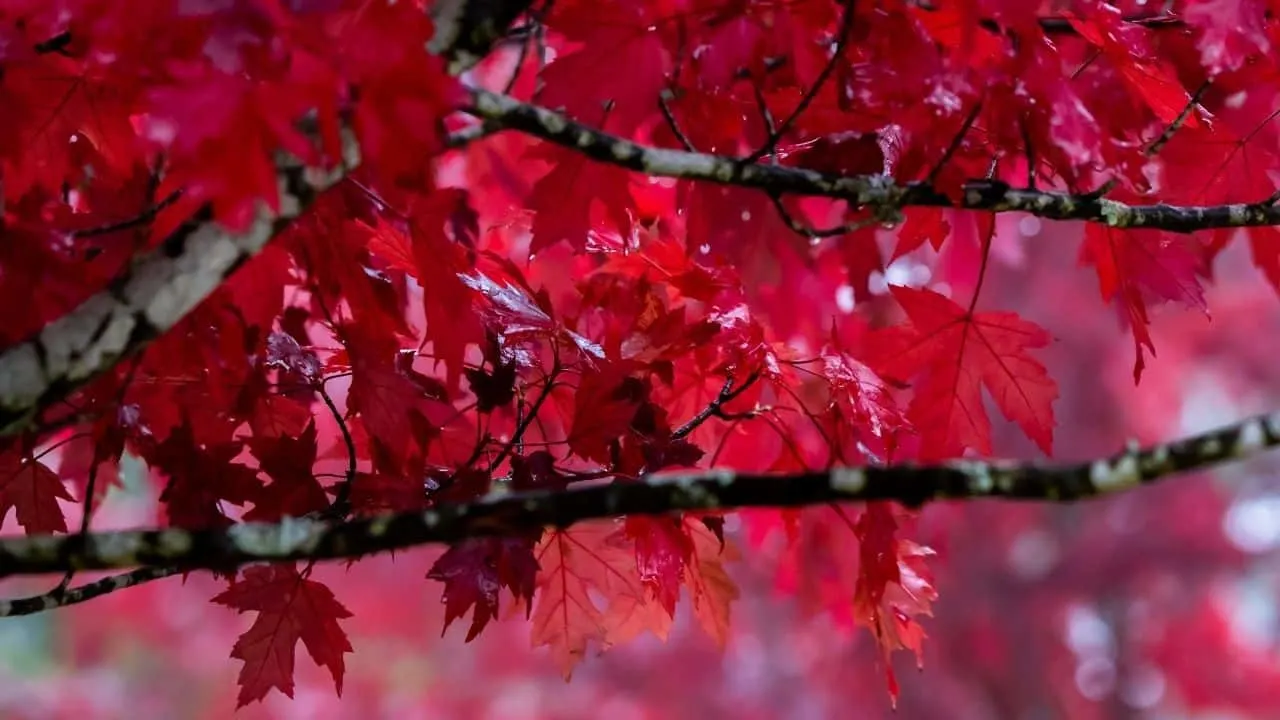
The crimson king maple grows to be 35 feet tall. This tree needs to be placed in an area receiving full sun but with light shading, as well as somewhere with well-draining soil.
Crimson king maple grows best in when planted the USDA hardiness zones 3 up to 7.
The foliage is a burgundy purple-red, and it makes quite the statement if planted next to trees with green leaves. In fall, the color of the leaves changes to a reddish-bronze.
Tree #9: Purple-Leaf Acacia
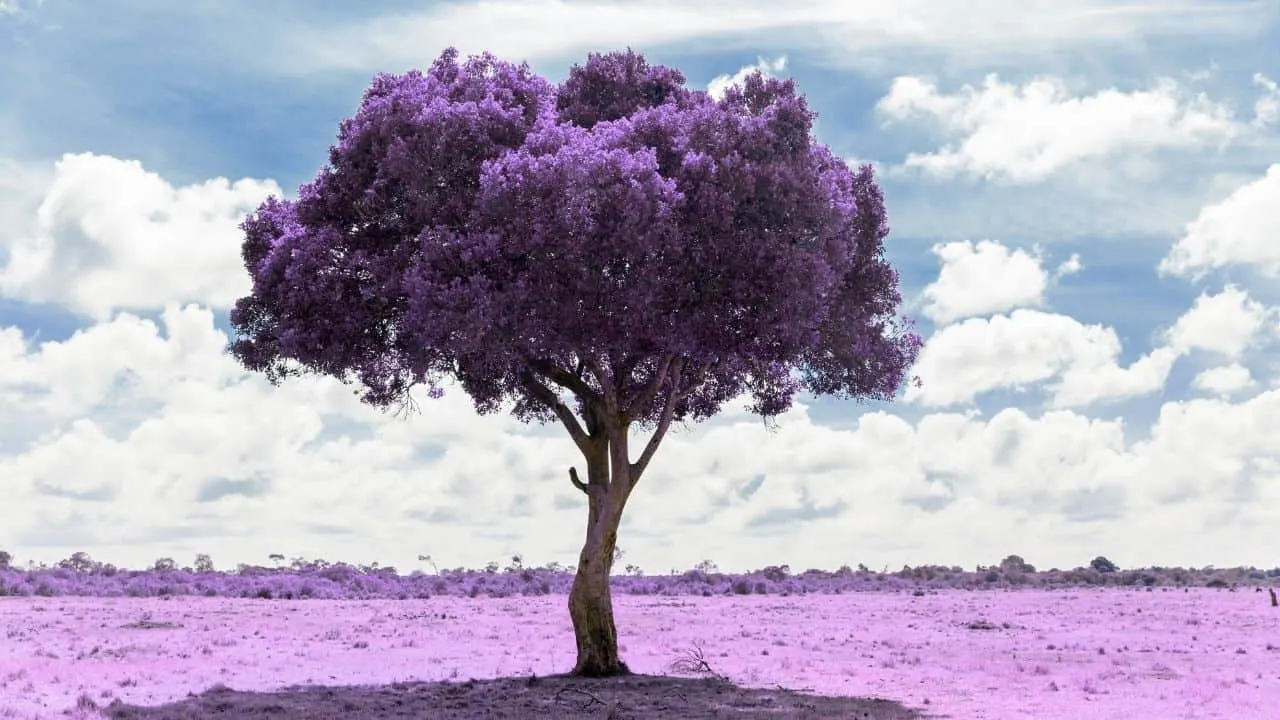
The purple-leaf acacia is another shrub tree, and it grows to a height of 15-20 feet.
Drought-tolerant, the purple-leaf acacia has yellow/gold flowers when they bloom and the foliage is a lavender purple and sometimes more bronze.
It likes partial to full sun and sandy loam soil. Purple-leaf acacias grow well when you plant them in the USDA hardiness zones 9-11.
Tree #10: Purple Smoke Tree
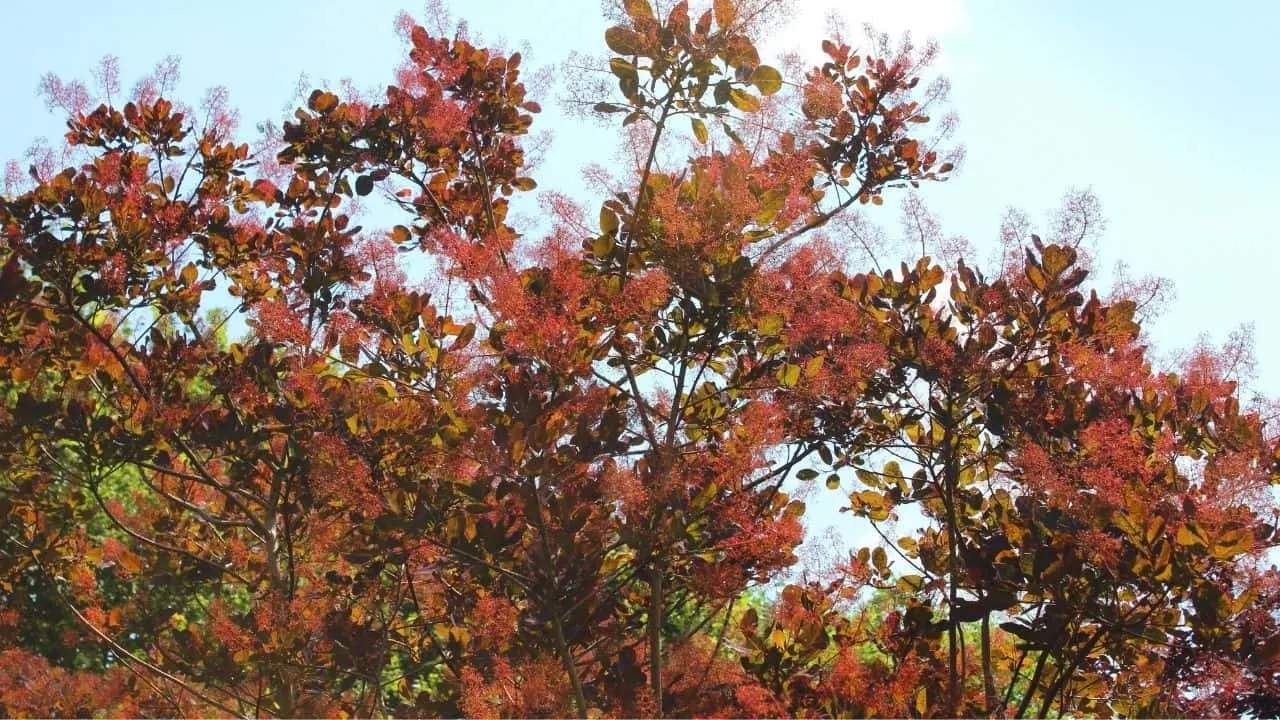
The smoke bush comes in green and purple-growing varieties.
If you want to be sure to see purple leaves in your yard, opt for these smoke bush varieties:
- Velvet cloak
- Grace
- Nordine red
- Notcutt’s variety
- Royal purple
- Redsmoke
These small shrub trees grow to be 12-15 feet tall. Smoke trees need full sun exposure and well-draining soil.
It’s recommended to plant them in USDA zones 4-9.
Tree #11: Copper Beech
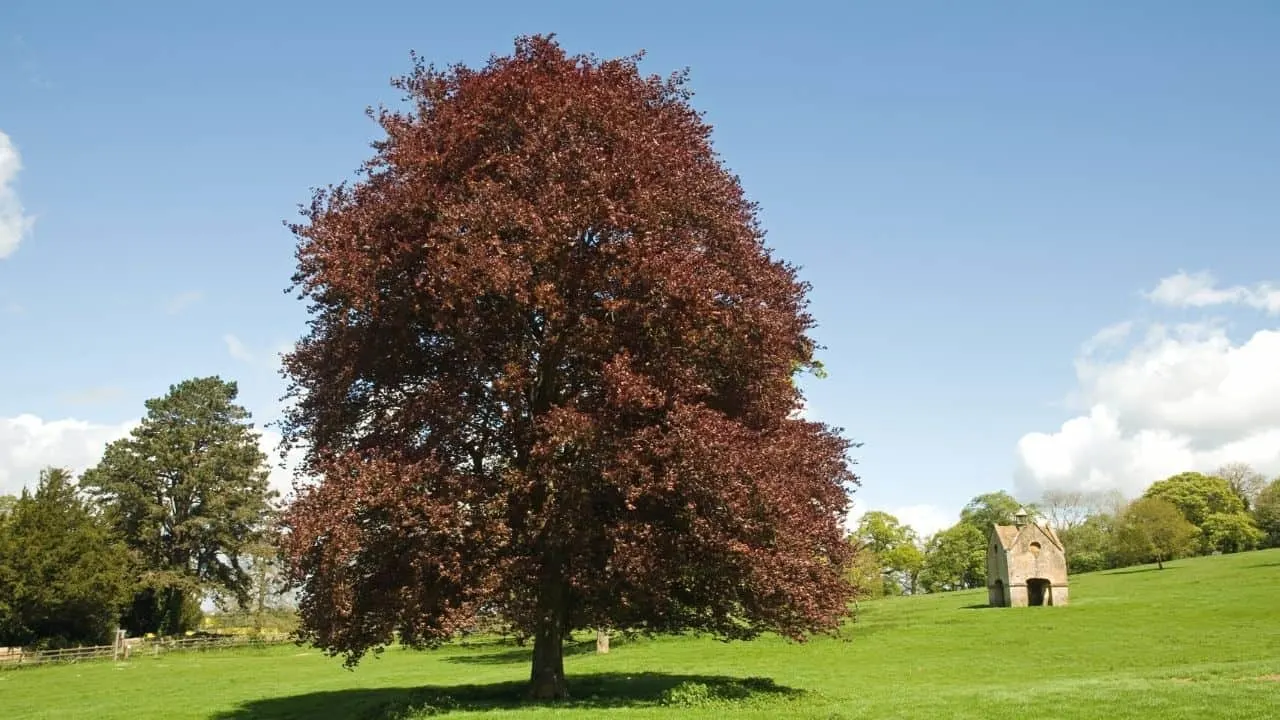
The copper beech tree grows up to 100 feet tall and thrive in USDA hardiness zones 4-7. They produce purple leaves and beechnuts.
The copper beech thrives in full to partial sunlight and well-draining soil.
Varieties of the copper beech tree include purple fountain, purpurea pendula, and atropunicea.
Other Purple-Leaf Trees and Shrubs
Other trees and shrubs that have purple leaves that I’d like to mention are:
- Schubert chokecherry
- Flowering plum tree
- Purple-leaved filbert
- Purple-leaf European filbert
- Japanese cryptomeria
- Purple pony cherry
- Chaste tree
- Royal empress
- Cherry plum
- Helmond pillar
- Blue jacaranda
- Crepe myrtle
- Blireiana plum
- Weigela
- Purple ninebark
- Diervilla Kodiak black
- Barberries
Frequently Asked Questions about Trees With Purple Leaves
Why do some trees have purple leaves?
Some trees have purple leaves because of the higher anthocyanin levels. Anthocyanin is a purple-colored pigment that turns leaves purple. While some trees naturally have elevated levels of this pigment, your trees’ leaves can turn purple if it is stressed or if normal growth is interrupted.
What maple tree has purple leaves?
A crimson king maple tree has purple leaves. This maple tree grows in the northern states and shows off its striking purple leaves during summer.
The Final Purple Leaf
I went a little crazy and planted quite a lot of trees with purple leaves. My garden now looks almost more purple than green, but I’ve gotten so many compliments.
And I’m happy.
You may wonder what I decided to plant?
I went with thundercloud and Vesuvius purple-leaf plums, a few redbud forest pansies, a profusion and thunderchild crabapples, black lace elderberries, a copper beech, and a crimson king maple.
All of these shrubs and trees thrive in my USDA hardiness zone of 5.
What purple-leaved tree or shrub will you plant?

Daniel has been a plant enthusiast for over 20 years. He owns hundreds of houseplants and prepares for the chili growing seasons yearly with great anticipation. His favorite plants are plant species in the Araceae family, such as Monstera, Philodendron, and Anthurium. He also loves gardening and is growing hot peppers, tomatoes, and many more vegetables.


